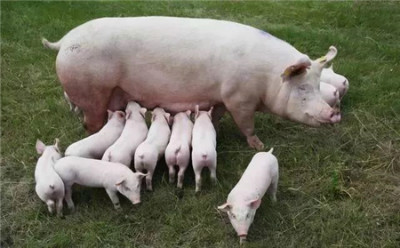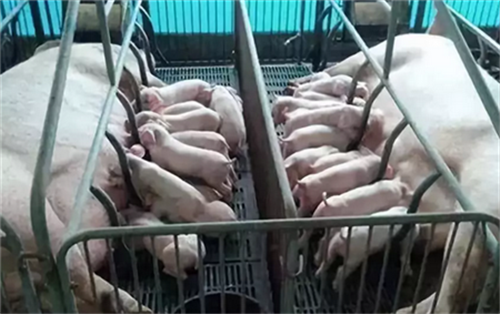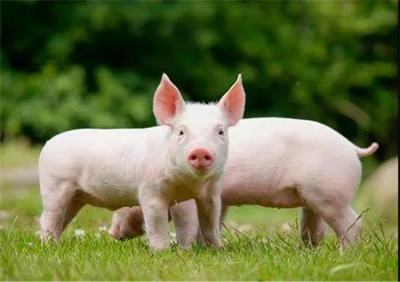What are the symptoms of porcine contagious pleuropneumonia? How to treat it?
The weather turned cooler and respiratory diseases increased day by day. Most of the recent cases received by the author are pigs of 30 jin ~ 100 jin, mainly abdominal breathing and mild coughing. If the treatment is not timely, the late treatment effect is poor and death occurs. There are also pig farms that reflect the absence of any symptoms of death and the nasal outflow of blood from some dead pigs, combined with anatomical symptoms to determine infectious pleuropneumonia.
Actinobacillus pleuropneumoniae is a gram-negative small ball-shaped bacteria, this bacteria is facultative anaerobes, the external resistance is not strong, general disinfectants can be killed. Diseased pigs and infected pigs are the source of infection of the disease. Breeding boars and chronically infected pigs play a very important role in the transmission of the disease, mainly through air droplets. Bacteria form droplets after excretion through breathing, coughing and sneezing, which is transmitted through respiratory tract through direct contact, and also through indirect contact with vehicles, appliances and clothing of breeders contaminated by pathogens.
Pigs of all ages and genders were susceptible, among which pigs aged from 6 weeks to 6 months were more susceptible, but 3-month-old piglets were the most susceptible. The occurrence of this disease mostly shows the most acute type or acute type of disease and dies quickly. Acute outbreaks of pigs, morbidity and mortality are generally about 50%; the death rate of the most acute type can reach 80% to 100%.

The occurrence of the disease is obviously seasonal, which mostly occurs from April to May and from September to November. Stress factors such as sudden change of feeding environment, transfer or mixing of pigs, crowding or long-distance transportation, poor ventilation, high humidity, sudden changes in temperature and other stress factors can cause the occurrence of the disease or accelerate the spread of the disease and increase the morbidity and mortality.
The incidence can be divided into the most acute type, acute type and chronic type. The most acute type of sudden onset, the body temperature of sick pigs increased to 41 ℃ ~ 42 ℃, increased heart rate, mental depression, waste of food, short-term diarrhea and vomiting symptoms. Early sick pigs have no obvious respiratory symptoms, late heart failure, nose, ear, eye and hindquarters skin cyanosis, late breathing is extremely difficult, often standing or dog sitting, mouth protruding, cough and asthma, and abdominal breathing. The body temperature drops before death, and foam bloody secretions flow out of the mouth and nose in severe cases. The diseased pigs died within 24 to 36 hours after the onset of clinical symptoms. Some cases died suddenly without any clinical symptoms. The case fatality rate of this type is as high as 80% to 100%. The body temperature of pigs with acute disease increased to 40.5 ℃ ~ 41 ℃, with severe dyspnea, cough, heart failure, red skin and mental depression. Due to the differences in feeding management and other stress conditions, the course of the disease is uncertain. The chronic type appears more than the late acute stage. The diseased pigs had mild fever or no fever, with a body temperature of 39.5 ℃ ~ 40 ℃, low spirits and loss of appetite. Varying degrees of spontaneous or intermittent cough, abnormal breathing, growth retardation. The course of the disease ranges from a few days to a week, or cured or when there are stress conditions, the symptoms worsen, the muscles of the pig are pale, the heart beats faster and dies suddenly.
The incidence of the disease is different, the anatomical symptoms are also different. The most acute type of dead pigs showed secretions full of foam blood in the trachea and bronchi, pulmonary congestion, hemorrhage, fibrinous thrombosis in blood vessels, alveolar and interstitial edema, and inflammation in the anterior and lower part of the lung. Obvious pathological changes can be seen in the pigs who died in the acute stage: the larynx is full of blood-like fluid, bilateral pneumonia, often in the cardiac lobe, apical lobe and diaphragmatic lobe, the focus area is purplish red, solid, clear outline, interstitial accumulation of blood-like colloid fluid. In the chronic type, nodules of different sizes can be seen in the lungs (nodules often occur in the diaphragmatic lobe). The nodules are surrounded by thick connective tissue, and bleeding spots can be seen in the pericardium.
When the disease occurs in pigs, the treatment should be based on the principle of relieving dyspnea and antimicrobials, and adequate doses of antibiotics should be used and the course of treatment should be long enough. Good results can be obtained in the early treatment of the disease, but antibiotics should be selected according to the results of drug sensitivity test. Generally available doxycycline, taimycin, sulfonamides and so on. The effect of injection administration is better for diseased pigs. Although antibiotics can be added to feed to control the disease, the mortality can be reduced, but the treated pigs are often infected pigs. The effect of drug treatment on chronic disease pigs is not ideal.
First of all, the disease should strengthen feeding management, strict sanitary disinfection measures, pay attention to ventilation, and keep the air in the house fresh. Reduce the influence of various stress factors and keep the nutrition level of pigs balanced enough. Regular health care for pigs, in order to achieve the purpose of purifying pigs and improving pig resistance.
- Prev

Prevention and treatment of common pig gastric ulcer in large-scale pig farm
Prevention and treatment of common pig gastric ulcer in large-scale pig farm
- Next

Pig neck red, swollen and gasping to death? It is very simple to make good vaccine prevention (1)
Pig neck red, swollen and gasping to death? It is very simple to make good vaccine prevention (1)
Related
- On the eggshell is a badge full of pride. British Poultry Egg Market and Consumer observation
- British study: 72% of Britons are willing to buy native eggs raised by insects
- Guidelines for friendly egg production revised the increase of space in chicken sheds can not be forced to change feathers and lay eggs.
- Risk of delay in customs clearance Australia suspends lobster exports to China
- Pig semen-the Vector of virus Transmission (4)
- Pig semen-the Vector of virus Transmission (3)
- Five common causes of difficult control of classical swine fever in clinic and their countermeasures
- Foot-and-mouth disease is the most effective way to prevent it!
- PED is the number one killer of piglets and has to be guarded against in autumn and winter.
- What is "yellow fat pig"? Have you ever heard the pig collector talk about "yellow fat pig"?

